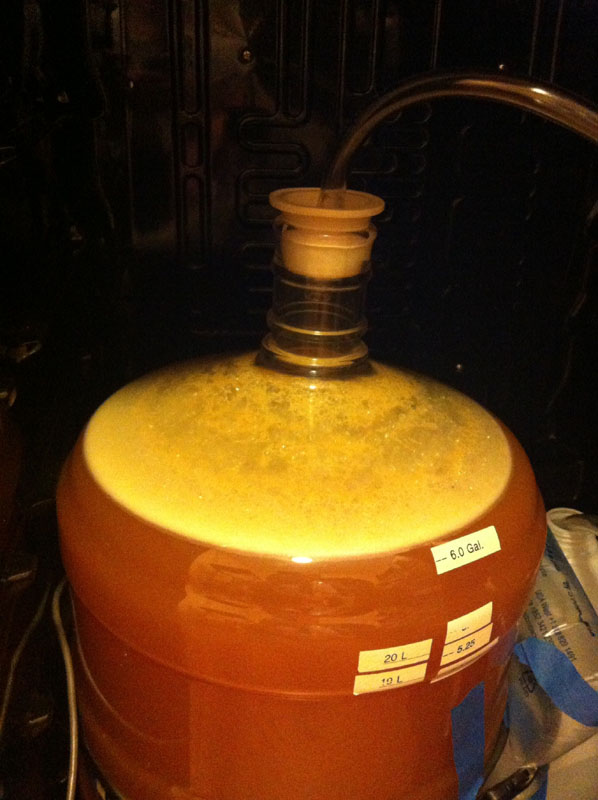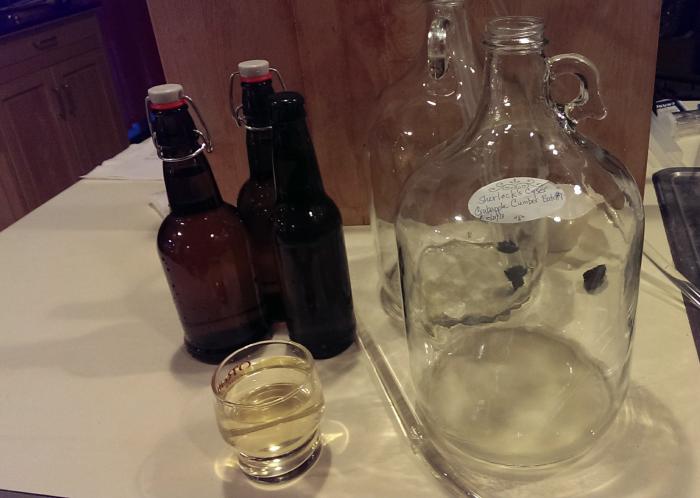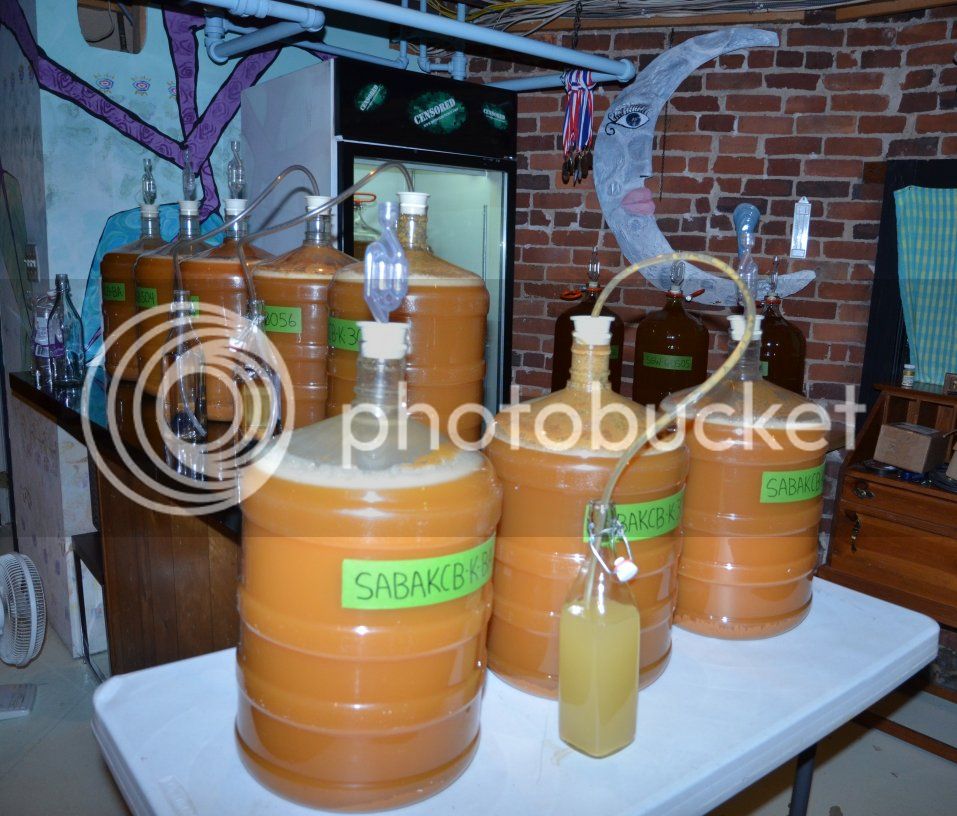Yeast – the best ones so far (for the juices I used) - Updated
Disclaimer - The best yeast is very much dependent on the style, juice and process. I generally like a pub style cider in the range of 1.004 to 1.012, that you can drink by the pint vs a drier style that you would have with food. I also like to keep some of the residual apple sugar for flavor rather than any sort of backsweetening, so I cold crash. These yeasts all work well for my purposes YMMV
Fermentation times for the yeasts depend a lot on ambient temperatures. I ferment in my basement, which isn’t temp controlled, but generally stays about least 10 degrees cooler than the rest of the house. I’ve divided the yeasts into three general categories.
Slow: 2 wks early season (62 – 66), 3wks midseason (58-64), 5+ wks late season (54-62)
Moderate: 8-9 days early season, 2+wks midseason, 3+ wks late season
Fast: 3-4 day early season, 6 days or less mid or late season
Brupaks Ale Yeast – This has been my go-to yeast for the past several years. It works great for a straight cider in the 1.008 to 1.014 range. Moderate fermentation time. It crashes easily and usually has a little more apple character than most of the other ale yeasts. It doesn’t work as well fermented dry or with honey. Generally no blowoff tube needed. For some reason, its not available in the US. I get it from the Hop and Grape, which is a UK store that does web sales and ships to US.
Wyeast 3056 – A close number 2. It can be used for a wider range of styles than the Brupaks – it can go up to 1.020 without being too sticky in the finish. At the high SG end, it has more of a juicy taste vs a sticky taste that some of the ale yeasts can get. It can also can get down to 1.002 or 1.004 for a nice dryish cider, without getting harsh or acidic. Not great for cysers. Moderate fermentation time. Usually a little slower than ale yeasts at warm temps, but a little faster at cold temps. Cold crashes easily, but usually takes a bit more time to clear fully after the crash than ale yeasts. It always needs a blowoff for the first week of fermentation.
Safale S-04 – Another very good ale yeast for cider. Moderate fermentation time, crashes easily and tastes great in the 1.002 to 1.012 range. It works great for cysers, which is mainly what I use it for these days. It does a nice job with wildflower and white sage honey, while keeping the apple flavor. No blowoff needed for straight juice. Generally best to use a blowoff tube for the first few days when making cysers. With regular juice, stopped at the 1.002 to 1.004 range, it has the mouthfeel and finish of a dry cider, but with more apple flavor and doesn’t require any aging to be drinkable right away. Its OK fermented completely dry, but usually takes at least a year or two of aging to mellow out.
Nottingham – This is the quintessential yeast for a pub style and a good one to start out with. Its easy to work with and easy to find at just about any homebrew store. Sadly, its no longer the great value, but the new packaging is nice. It starts fast, kicks up very little krausen, moderate fermentation time and cold crashes well with any juice. It typically clears a little faster than the other ale yeasts. It’s the only yeast I know of where the cold crash performance is part of the yeast spec. “Shows flocculation at completion of fermentation, and settling is promoted by cooling”. It does well in the 1.004 to 1.010 range. Not a good choice for fermenting dry, as it tends to strip out the flavor if it goes too far.
Gervins English Ale Yeast – As near as I can tell, this is the same yeast as Notty in the old style packaging for half the price. I’ve fermented them side by side and couldn’t tell the difference.
WLP041 – Good for early season ciders, it’s a slow fermenter and easy to crash. This is particularly nice early in the season when temps are warm and everything else is fermenting relatively quickly. For someone who doesn’t have a cool place for brewing, this one would be a good choice. It doesn’t do so well later in the season, as temps drop its more prone to stalling and wild yeast takeover. I’ve been using it mostly for sweeter styles, up to 1.025, but it does fine down to 1.010 and could probably go drier.
Wyeast 3068 – This is my girlfriend’s favorite yeast and a real crowd pleaser. Its good for a sweeter cider, in the 1.020 to 1.025 range and not very good below 1.012. At high gravities, it leaves a nice juicy taste, vs a lot of the ale yeasts which often taste overly sweet and sticky above 1.014 or so. Moderate to Slow fermentation time. Cold crashes easily. It always needs a blowoff. It works better with sufited juice – unsulfited tends to turn a little weird and get acidic over time.
Safale US-05 – This yeast is good when sugar or malt are added to the juice. Not so good with straight juice or honey. When turbinado/corn sugar mix is added, it gets a nice malty taste. I’m not a big fan of graffs, but of the half dozen yeasts I tried for graffs, the US05 came out the best. Moderate fermentation time, no blowoff needed. Works well for a raspberry cider, which is what I mostly use it for these days. Compared to other ale yeasts, it keeps the raspberry and apple flavor without getting to winey in the finish.
Saflager S-23 – This lager yeast makes for a cider that is lighter tasting and a little more complex compared to an ale yeast. My friends who are more wine drinkers and/or like a drier style like this one a lot. I usually try to stop it around 1.010. Moderate fermentation time, no blowoff needed. Because it’s a lager yeast, it’s a little tougher to crash, but it tastes good down to about 1.002, so its generally OK if the first crash doesn’t hold. I find that it works better mid to late season when ferment times are longer, which seems to make it easier to crash and stay stable. Sometimes is a little stinky, but not too bad.
Wyeast 3333 - Good for cysers using Orange Blossom Honey. Uses a lot of nutrient so a good one to try if you want to try using nitrogen reduction to stop fermentation
WLP005 - This is another good English Ale strain that does not seem to be as resistant to wild yeast as some of the others, but if you sulfite the juice first, it tastes great. I just started using this again this season and so far (two keg batches) I'd put it close to Brupaks for making a cider in the 1.008 to 1.012 range with a nice distinctive apple taste. It also ferments a little slower than most of the other ale yeasts, which is handy when doing multiple batches. Several years ago, I had good results with it before in test batches, but the first keg batch I did was taken over by wild yeast and fermented out before I could crash it. This season I sulfited the WLP005 batches first, and that seems to help a lot. Half a dose of sulfite, 24hrs before the pitch seems to keep the wild yeast at bay and no noticeable sulfite residual taste (to me anyway) after 2 months. Also, when sulfited, this yeast doesnt seem to get as stinky as some of the ale yeasts in presence of sulfites.
Yeasts I’ll probably try again
Wild yeast – I’ve done a lot of experiments with wild yeasts. Generally, they are more work and less predictable than ale or wheat yeast batches, but sometimes its worth it. Some of my best batches have been with wild yeast but also some of the worst. They generally do better with a long slow fermentation, with temps in the 50 to 55 range and taking several months to finish. If they get too warm, they have a tendancy to take off and ferment the juice down to nothing. Best for late season or temp control fermentation. You can also leave a plastic jug with a pop top (don’t use glass or screw top) in the fridge for 5-6 months and that usually works well, although it ties up fridge space for a long time. If you can ferment them cool and slow, the can sometimes be cold crashed. Above 60F they are impossible to crash
Danstar BRY97 - I did a couple of gallon batches with this at the end of the 2013 season and they came out well. Good apple and moderate to slow fermentation times - a little slower than most ale yeasts, not quite as slow as WLP005 and Wy3068, so a good one to use when making multiple batches and you want to space out the crash times. Does not like sulfites. The batch that I treated with k-meta, 24hrs before pitching yeast got very stinky. I plan on using this in a few keg batches next year and if these come out well, this yeast will probably go into regular rotation.
Yeasts that are good, but tend to get stinky
Wyeast 1010 - This one is really good for cysers, fruit cider, or just plain juice. It is a moderate fermenter, crashes relatively easily and has a real juicy, appley flavor that works best around 1.010 or so. It can get a little sticky tasting above that. The best scoring cider that I've ever had at a tasting was with this yeast and a pound of raspberries. The only problem is that its really stinky while fermenting, regardless of temps and sometimes after the crash as well. There were a few kegs that I had to scrub with CO2 a couple times to get the stank out, although after that, they tasted great.
Wyeast 2001 - Good for a semi dry cider with plain juice. My friends who like dry cider liked this one a lot. In the 1.006 to 1.008 range it tastes a drier than it really is, with hardly any perception of sweetness, but nice mouthfeel and a crisp finish. Similar in style to S23, maybe a little better tasting. Moderate fermenter, crashes fairly well. Consistently stank up the whole house and took multiple CO2 scrubbings to get the smell out of the keg. The end result was always pretty good, but a lot of work to get it drinkable










